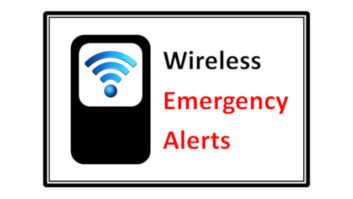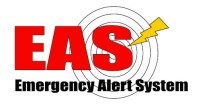
WASHINGTON — The FCC’s latest rulemaking proposal to improve the Emergency Alert System appears to track closely the recent recommendations of industry experts on ways to solve lingering operational and security issues.
The commission’s Notice of Proposed Rulemaking (EB Docket 04-296) takes some, but not all, of the recommendations from several subgroups of the Communications Security, Reliability and Interoperability Council, a communications and public warning advisory group established by the FCC.
The discussions are likely to affect how much cost and effort will be required of radio stations and equipment makers in future EAS improvements.
The agency is paying particular attention to equipment and technical issues identified following the first nationwide EAS test in 2011, according to broadcasters and gear manufacturers. Normally the FCC, along with the Federal Emergency Management Agency and the National Weather Service, implements the EAS. FEMA is responsible for initial transmission of presidential alerts and overall administration; the FCC says its own role is to adopt, administer and enforce EAS.
FEMA, with help from the FCC, coordinated the national test.
Overall, federal officials deemed the first nationwide EAS test successful, but there were technical glitches. Some stations never received the test; others aired garbled audio. There were problems reported due to the short test length and equipment differences in handling the alert header codes. Many of the issues identified during the national test, such as audio problems, have been fixed, according to regulators.
The FCC required stations to submit their test results. Based on that data, the commission concluded that the national EAS distribution architecture is fundamentally sound, but the agency solicited input from key stakeholders seeking improvements in advance of another national test. A significant development since 2011 has been the changeover to alerting that uses the Internet-based Common Alerting Protocol, as the commission spells out in the proposed rulemaking released in June. (CAP was not included in the first national test; TV and radio stations were not required to have CAP-compliant EAS equipment until mid-2012.)
Gary Timm, broadcast chair of the Wisconsin EAS Committee, said every one of the FCC’s new proposals, if adopted, will have some impact on EAS participants. “However, the commission does a very good job in this NPRM of not only explaining its intentions, but also detailing the possible pros and cons of each proposal.”
The commission spells everything out in the NPRM, according to Timm, giving broadcasters the ability to evaluate the impact of the proposals.
In the rulemaking, the agency suggestsusing the existing event code “NPT” for National Periodic Tests. The FCC says this proposed change and others are necessary to conduct future nationwide national EAS tests. FEMA would like to hold another test “in the near future,” according to the commission.
NPT GEAR GUIDANCE
FEMA and other stakeholders have asked the FCC to give guidance on how EAS equipment must process the NPT. Most EAS experts contacted for this article agree substantial software and hardware upgrades for stations will be required if the commission revises its rules so that the NPT test code fully emulates an Emergency Action Notification, the live code to be used by the president or his representative in an actual emergency, in all of its characteristics.
An alternative is to have the NPT activated similar to any other alert, without the benefits of the full EAN, meaning it would not override other EAS alerts or test the functionality of EAS equipment by lasting longer that two minutes. While local and state EAS messages are time-limited to two minutes, there is no limit for national EAS alerts, according to FEMA.
The impact on broadcasters and their EAS encoders/decoders will be determined by which tactic the FCC chooses to pursue, said Sage Alerting Systems President Harold Price. “As the NPT code has always been a part of EAS, all devices, legacy and otherwise, should be able to accept and relay an NPT as it is currently defined — a regular alert with a two-minute time limit,” Price said.
If the commission decides to make NPT work like an EAN — with no time limit — a more significant source code change would be required, Price said. “In the case of Sage grey box legacy equipment, there is no workaround treating an NPT like an EAN; the hardware would need to be replaced.”
It’s unclear exactly how many stations might need to replace EAS gear under that scenario. Much of the equipment tested in 2011 has since been replaced with new CAP-aware gear, EAS observers said.
The commission also proposes testing the Emergency Activation Notification — which can only be activated by the president or his representative — every three years. Adoption of a national location code, 000000, for both EAS and NPT is being recommended to prevent confusion with a specific city code.
CSRIC Advises EAS Improvements
The Communications Security, Reliability and Interoperability Council, an FCC advisory committee, established 10 working groups to examine areas of concern about EAS infrastructure; its Working Group 3 focused on improvements.
Based on the work of its subgroups, CSRIC adopted those recommendations and gave them to the FCC.
Suggestions included improving EAS operational issues and security, and the commission responded with its NPRM soon after in June.
EAS experts said the agency viewed CSRIC’s work favorably, though the commission did not act on every recommendation, such as those addressing State Emergency Communications Committees, state EAS plans and cybersecurity.
Clay Freinwald, Washington State Emergency Communications Committee chair and co-chair of CSRIC’s State EAS Plans subgroup, said his group’s suggestions would not affect broadcasters significantly.
The subgroup recommended steps to improve the process for developing and submitting state EAS plans to the FCC. As part of the plan, broadcasters would be asked to step forward, lending their expertise and technical assistance in support of SECC.
“We also need to get more people from the radio management and programming side involved in EAS. It’s not just an engineer thing anymore,” Freinwald said. “EAS is a cooperative and collaborative, and to get to that level we need all sides coming together, from the local emergency manager to the broadcast and cable systems.”
Meanwhile, CSRIC’s EAS Security subgroup’s list of best practices pressed broadcasters, manufacturers and all participants to adhere to stricter security standards to protect EAS from cyberattacks. Nevada EAS Chair Adrienne Abbott said the goal of the subcommittee was to look at every angle of cybersecurity.
“Our recommendations came down to the basics. Access, good password hygiene and constant updating are all very important. Keeping EAS gear in a secure physical environment is important, too,” Abbott said. “There will be a cost to radio broadcasters for good cybersecurity.”
Abbott said most radio station managers don’t believe they have a cybersecurity issue even though their EAS equipment is connected to the Internet. Broadcasters “will padlock the prize closet yet have a Windows XP computer back in the jock pit for [EAS] stuff,” Abbott said.
The EAS Security subgroup, which consisted of broadcasters, cable operators, SECC representatives, equipment manufacturers and government reps, members recommended radio staffs undergo periodic IT security training.
To read the recommendations, go to fcc.gov/pshs/advisory/ and click on “CSRIC.”
— Randy J. Stine
Broadcasters will most likely have to update EAS equipment to receive the new national location code, according to experts.
“I can’t speak for other manufacturers of CAP EAS equipment, but our assumption is that a software or firmware update may be required,” said Ed Czarnecki, senior director of strategic development & global government affairs for Monroe Electronics. “From some legacy equipment, there is the possibility that a software or firmware upgrade would be also needed, assuming that legacy equipment is even being supported by a manufacturer.”
If the station’s legacy EAS device is not supported, it may become a question of equipment replacement, Czarnecki said. “The FCC did caution about the potential impact of rule changes back with the Fifth Report and Order on EAS in 2012. The handwriting has been more or less on the wall for the past several years.”
It could cost about $2,500 to $3,500 to replace a typical radio station’s EAS encoder, according to experts.
ELECTRONIC REPORTING
In addition, the FCC wants to simplify the use of the online Electronic Test Reporting System, used by participants to report test results.
The commission reported that more than 16,000 EAS participants submitted test result data following the 2011 national test. However, some respondents used paper forms. The agency asks for comment on whether to mandate use of the electronic filing system in the future.
The FCC also seeks input on whether to require stations to meet minimal standards to ensure alerts are accessible to all members of the public, including those with disabilities, though the agency is mindful of concerns about potential implementation costs. “However, all members of the public should be able to receive timely and accurate EAS alerts. It is critical, therefore, that that the EAS be accessible to all members of the public, including those with disabilities,” the commission wrote in its NPRM.
The Minority Media Telecommunications Council has proposed that the commission change EAS to require Primary Entry Point stations to air presidential-level messages in both English and Spanish. This is the subject of a separate rulemaking, as Radio World has reported (June 18, “EAS: Lost in Translation?”)
Along those same lines, the FCC seeks comment on ways to ensure EAS audio and visual elements convey the same meaning during an event.
Ultimately, more concise EAS standards are needed to aid broadcasters and planning, said Gary Smith, chief engineer for Cherry Creek Radio’s Utah station cluster.
“Current language that allows for shortcuts has hurt the broadcaster who least can afford CAP equipment. They have been allowed to add a CAP decoder to legacy equipment and now may find themselves in a position where they need to purchase new CAP compliant equipment to replace the legacy equipment.”
A firm understanding of the FCC’s expectations for EAS “will help manufacturers to further develop their EAS products,” Smith said.
The FCC said it does not comment on pending rulemakings. Comments to EB Docket 04-296 are due Aug. 14 and replies Aug. 29.
Comment on this or any story. Email [email protected].











